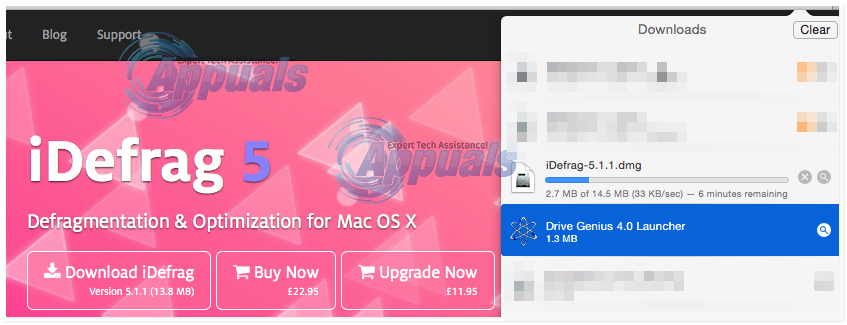

- Programs like idefrag mac os x#
- Programs like idefrag movie#
- Programs like idefrag install#
- Programs like idefrag update#
- Programs like idefrag manual#
Insure the Mac has at least 5-10% of total drive capacity available at all times to adequately provide room for temporary files, caches, virtual memory, swap, and sleep files.
Programs like idefrag update#
Programs like idefrag install#
Programs like idefrag movie#
If you fit into that limited user sample and have a 2008 Mac Pro with the original hard drive loaded up with thousands of movie files that are 10GB each, you may have a case where defragging could help. Notice I mentioned old hard drive too, because with how OS X works it takes a very long time for file fragmentation to occur, and users who have new drives or who upgrade drives periodically probably won’t ever experience any file fragmentation at all. This means things like hundreds if not thousands of 1GB or greater movie files, thousands of huge audio files, or thousands of enormous creative documents, which is usually pro users of tools like Adobe Premier, Logic Pro, Final Cut, Photoshop, or similar apps that create many large multimedia files. In my many years of Mac experience, the most common user profile who could theoretically benefit from an occasional disk defrag are multimedia creators who have tons of enormous files scattered around an old hard drive.
Programs like idefrag manual#
Generally, it’s a small cohort of Mac users who may potentially benefit from using manual disk defragmentation tools in OS X.

What about the exceptions? What Macs need to be defragged? Additionally, many modern Macs ship with SSD, or Flash Storage drives, which don’t ever need to be defragged in general because they have their own maintenance process known as TRIM.
Programs like idefrag mac os x#
There are several reasons for this, one being that the Mac OS X HFS Plus file system automatically defragments files on its own, in a process known as Hot File Adaptive Clustering (HFC). One would assume that if Apple felt defragmenting a Mac drive was important enough, it would have included such a feature in the Disk Utility app of OS X, right? But it didn’t, and no such defrag option exists, which should give a pretty clear indicator that for the vast majority of Mac users, defragging an OS X drive simply isn’t a necessary task. On the other hand, Mac OS X includes no such defragging tools or general drive optimizations (no, Repair Disk is not the same thing). Newer versions of Windows have generally improved on file fragmentation, but many longtime users continue to perform a regular defrag even if it has turned into a hocus-pocus maintenance routine, and the defrag ability remains intact in the newest versions of Windows, renamed from “Disk Defragmenter” to now be labeled as a more generic “Optimize Drives” function. Fragmentation in Windows vs OS Xįragmentation is so common in the Windows world that the Windows operating system includes built-in defragmenting utilities, which has become a part of the typical maintenance scheme of most PC owners. The result is most often felt as decreased performance of the computer, and the resolution is a process called defragmentation, which basically just reorganizes the data so that related bits are grouped together. If you’re confused already, here’s some quick background disk fragmentation is the gradual inability of a file system to keep related data together, which results in increased hard drive activity as the drive has to seek out related data more often.


 0 kommentar(er)
0 kommentar(er)
